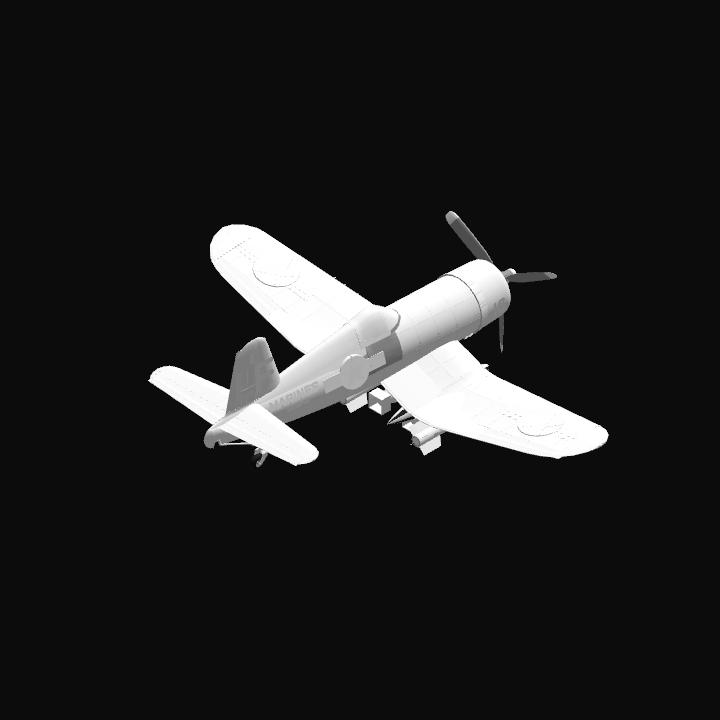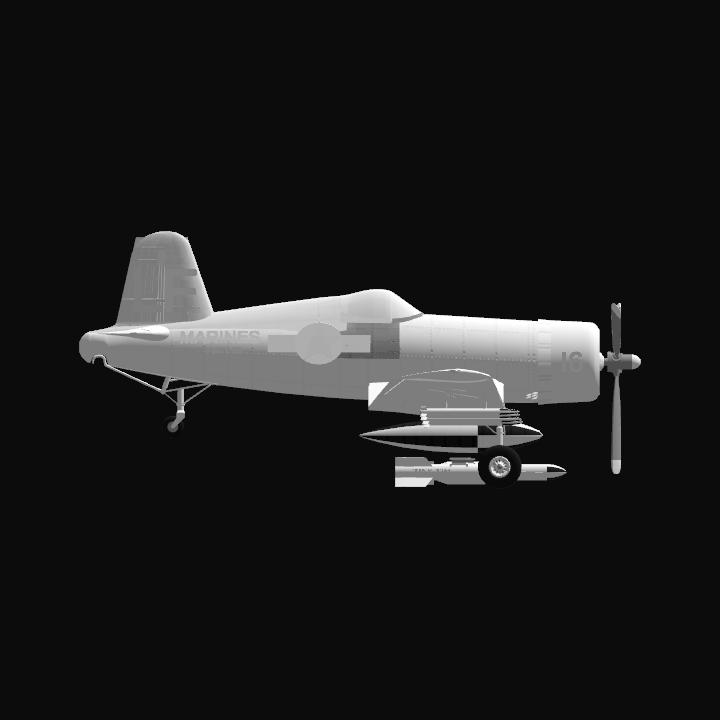The Vought F4U Corsair was a carrier based, single engine fighter, flown by the U.S. Navy and Marine Corps during WWII and the Korean War. Powered by the powerful 18 cylinder Pratt & Whitney R-2800, the Corsair is easily destinguished by its bent “gull wing” design. This wing was a compromise engineers at Vought had to make in order to accommodate the massive 13 foot Hamilton Standard Propellar used by the Corsair. This wing also boasted highly efficient aerodynamics that would grant the Corsair excellent maneuverability. Each wing root held two massive air intakes to feed its engine. At certain speeds, these intakes would create a whistling sound. The Japanese nicknamed the Corsair “whistling death”. Unfortunately, due to its incredibly poor visibility while looking over the nose, and a tendency to snap roll due to the torque of it’s engine, the Corsair was very difficult to land on aircraft carriers. The Corsair was phased out as a carrier aircraft with the introduction of the F6F “Hellcat” beginning in 1943. The Navy would unload their Corsairs on the Marine Corps, where it would quickly gain the reputation as an excellent ground attack aircraft. The Corsair could carry a wide array of weapons, including 500 and 1,000 pound general purpose bombs, HVAR rockets, drop tanks for extended range, and even the “Tiny Tim” anti-ship rocket. The Corsair would continue to fight in the Korean War as a ground attack fighter, but would be phased out by the purpose built Douglas A1 “Skyraider”. The Corsair was an excellent all around fighter, tallying an impressive 11:1 kill to death ratio in WWII.
Slider 1: elevator trim
Slider 2: increase to greater than 75% to fire .50cal Brownings
Slider 3: increase to greater than 75% to fire selected secondary armament.
To change between secondary armaments, simple grab and remove unwanted weapons and use translate tool to position on underwing pylon. Next go to vizzy, disconnect line of code for unused armament and connect line of code for selected armament. They are labled to make it easy.
Unfortunately, no matter what i tried, i couldn’t get the tail hook to catch the arrestor wires i made. I’ll continue to try and get this to work. If i do get it to work, ill post an update
8 Comments
- Log in to leave a comment
-
8,512 Jfranz1611 months ago
@Welliedowner what do you mean binding throttle?
Use the joystick to control the throttle. In order to get the engine to idle correctly and not stop turning when you backed off the throttle, I tethered the engine to the translate forward function, then tethered translate forward to the throttle. If you use the throttle slider instead of the joystick, sometimes it doesn’t work correctly -
-
-
-
3,670 Isosceles5111 months ago
Love how you put it next to a ship that pirates/privateers would have used, as the F-4U was named after a kind of privateer: Corsairs!
-
-









@Jfranz16 so joystick, controls throttle.. heh?